28 October 2024
for Madrid Nuevo Norte
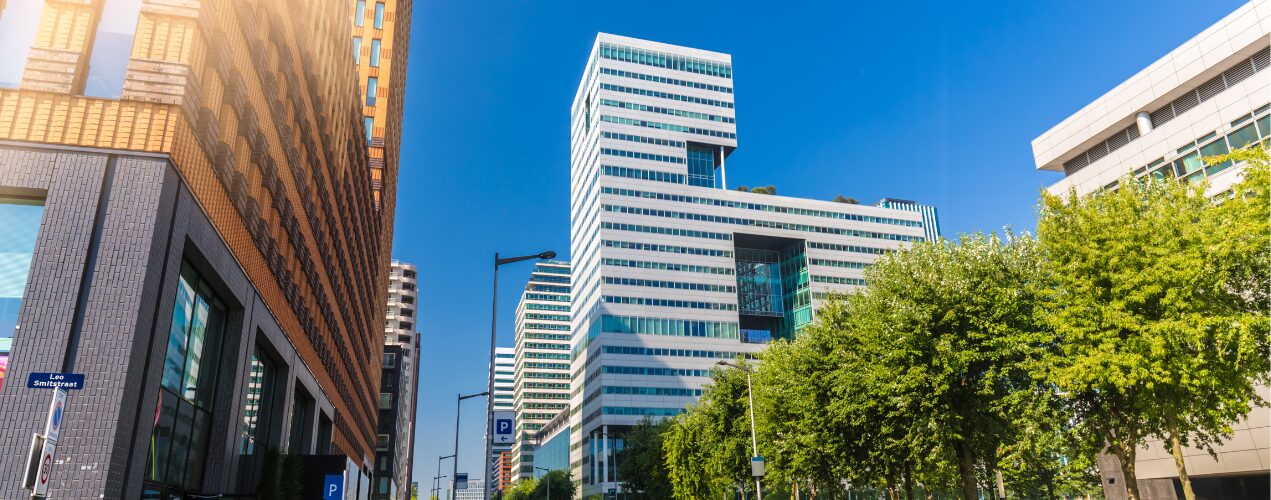
Zuidas is the most ambitious urban planning process carried out in the Netherlands in recent decades. The project, initially conceived in the 1990s, aimed to unite Amsterdam-Zuid and Buitenveldert, two neighbourhoods historically separated by the double barrier formed by the railway tracks and the city’s ring road. The plan was not only to partially bridge this urban gap, but from the outset to take advantage of the proximity to the airport and the excellent connections in the area to create a modern business centre. Like other international projects, such as Canary Wharf in London or La Défense in Paris, the project has been revised in recent years to include other uses, especially housing, and to give prominence to public spaces. This is all with the aim of generating urban life in the streets through intermingling and complementary uses.
At present, construction is well advanced in Zuidas. Some of its sectors, named after famous composers such as Beethoven, Mahler, Gershwin and Ravel, are already being occupied. On its streets, pedestrians and bicycles play an important role, first floor stores abound, and there is already a sense of vibrancy and urban life.
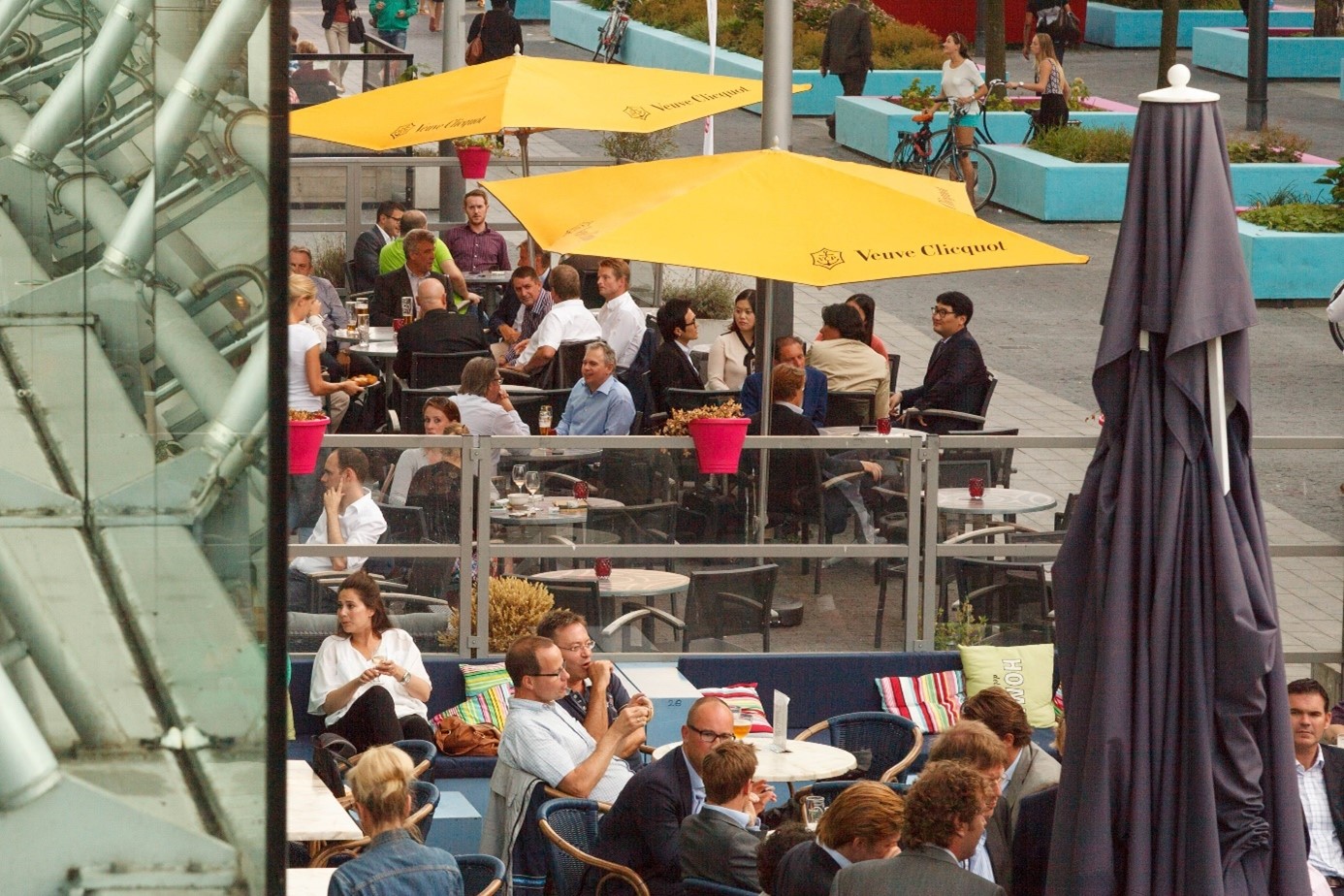
The new Zuidas neighbourhood is characterised by lively streets and a focus on pedestrians.
It is impossible to walk through Zuidas without noticing another characteristic element of the new neighbourhood: the unique design of its buildings. Dutch and international architectural firms have seized the opportunity to bring their creativity to the district. Names such as Norman Foster, MVRDV, Toyo Ito and Rem Koolhaas (OMA) are making their mark. They are modern designs, full of personality, which give the area its own identity and make it easy for pedestrians to identify urban milestones and find their way around the streets.
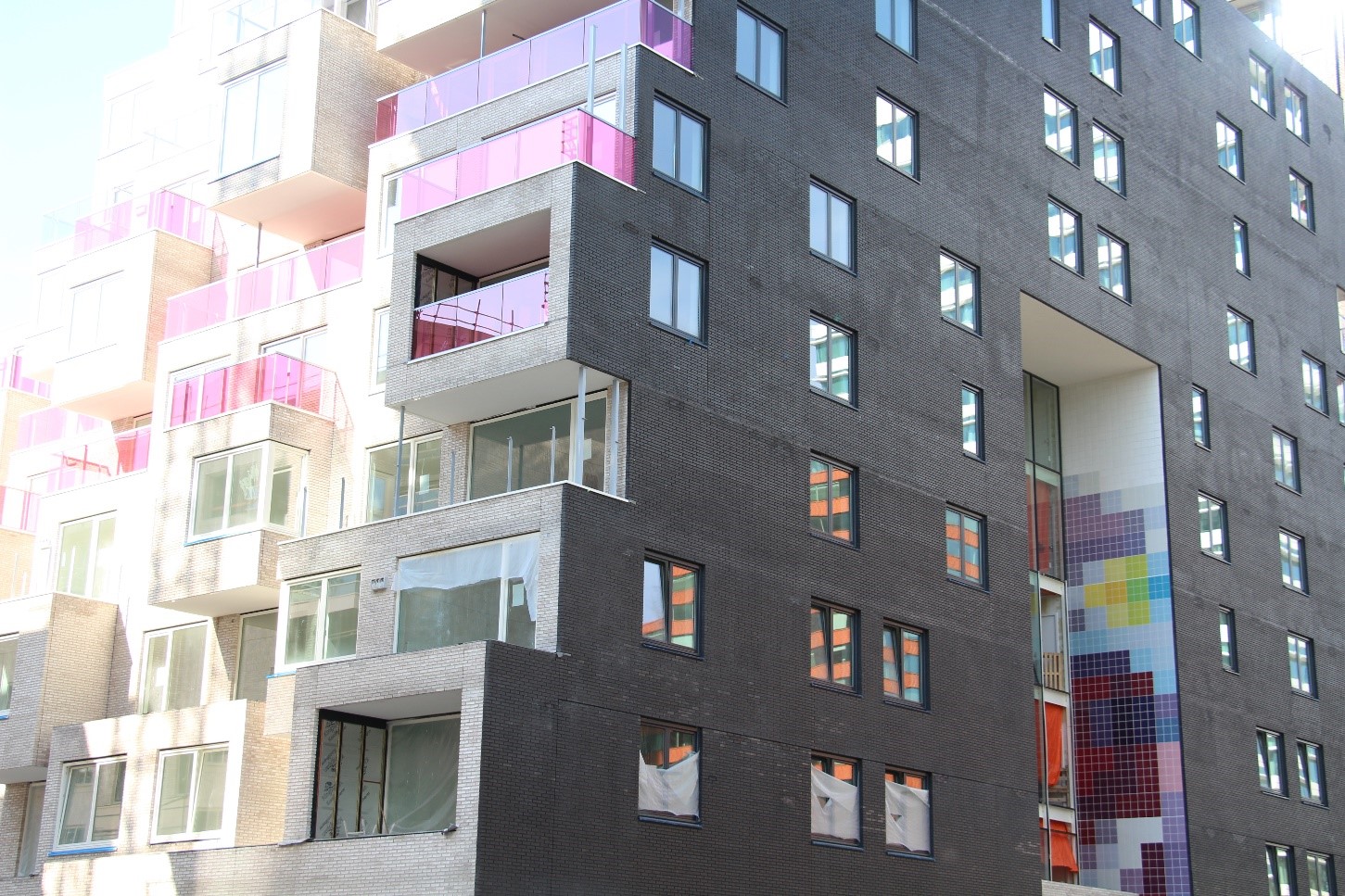
Housing, commerce, facilities and public spaces live side by side in this new development. Residential building, designed by seARCH studio. Photo by Fred Romero
One of the most striking buildings is the tower known as “The Rock”, and not without reason: Built in 2009, what looks like a large rock stands on top of a glass tower, with a surprising effect that makes the viewer ponder how such a heavy material can stand on the fragile glass.
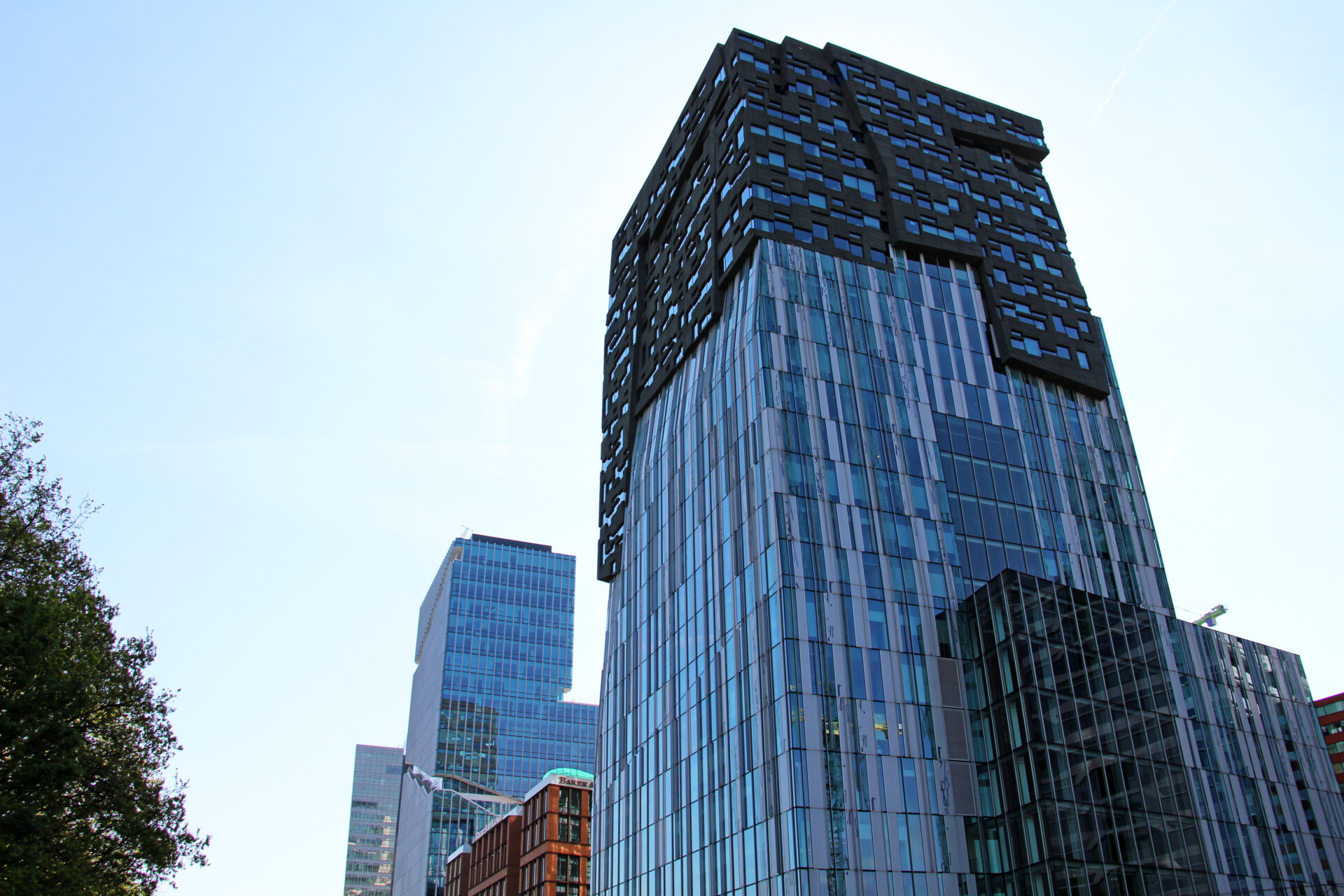
“The Rock”, a tower designed by Dutch architect Erick van Egeraat. Photo by Fred Romero.
The headquarters of Jeroen Van Schooten’s ING Group, located on the western edge of Zuidas, has also been nicknamed by Amsterdam’s locals “The Shoe”. It stands out not only for its unique shape and structure, but for pioneering the use of new technologies to improve the energy efficiency of the building back in 1998.
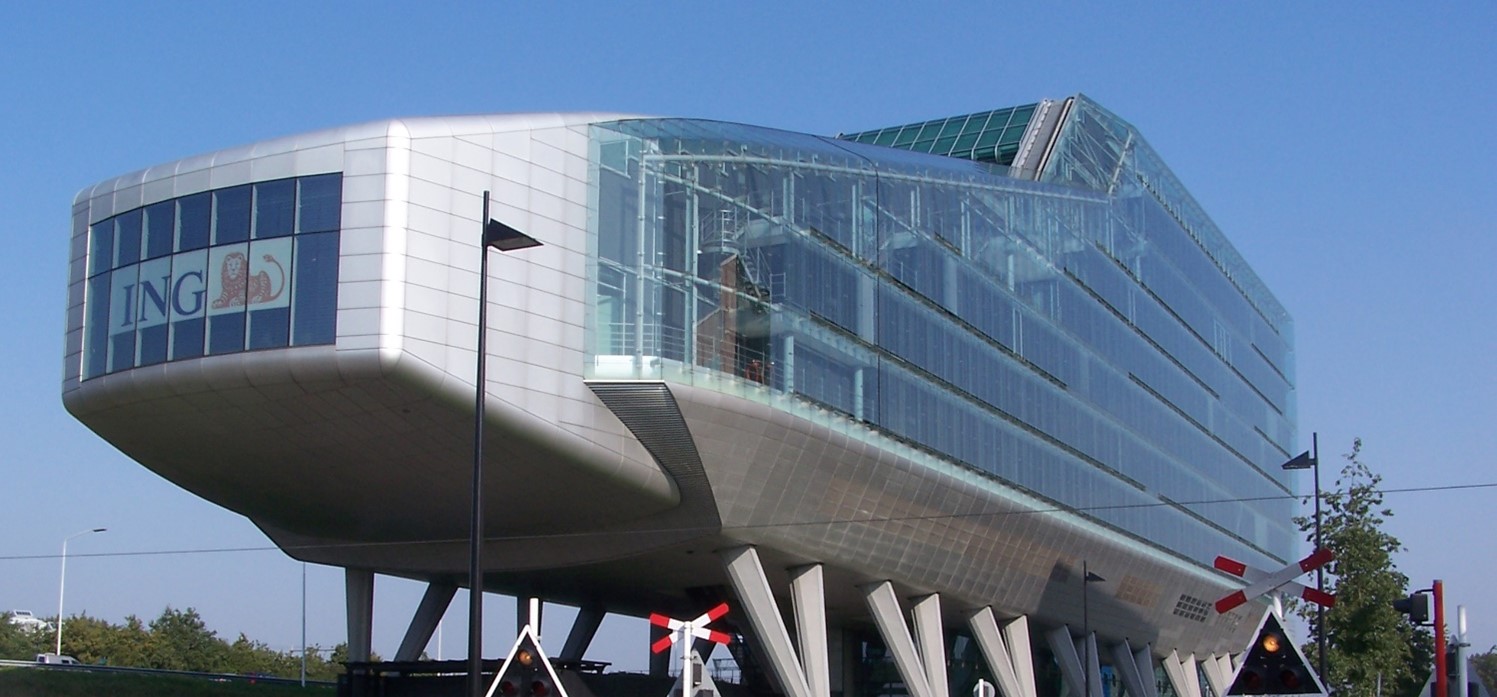
The ING House, nicknamed “de Schoen” (the shoe) by the Dutch, is one of the milestones of modern architecture in Amsterdam.
Other buildings worthy of mention include Amsterdam Symphony by Pi de Brujin, which combines offices and housing in the same building, with façades entirely clad in brick in a tribute to the city’s architectural tradition. These are just a few of the many remarkable buildings in the new neighbourhood. However, despite the remarkable individual designs, what is most striking in Zuidas is the harmony of its buildings and streets as a whole. When walking through them, one can see how compact, mixed urbanism, designed to be comfortably explored on foot and by public transport, manages to create new urban centres that are attractive and full of life.